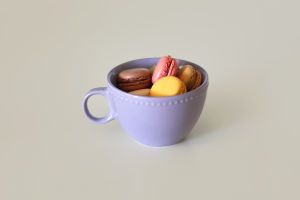Pickleball is a fun, fast-growing sport that blends elements of tennis, badminton, and ping-pong.
The key to an enjoyable game is choosing the right pickleball racket (also called a paddle).
With numerous options available, finding the one that best suits your playing style and skill level can be tricky. Here’s a guide to help you choose the most suitable pickleball racket.
1. Consider the Material
Pickleball paddles are commonly made from three main materials: wood, composite, and graphite. Each material has unique qualities that affect performance.
Wood: Wooden paddles are durable and budget-friendly, making them a great choice for beginners or recreational players. However, they are heavier than other paddles, which can be tiring for extended play or more competitive games.
Composite: Composite paddles are a popular choice for intermediate and advanced players. Made from a mix of materials, often including fiberglass and polymer, they offer a balance between power and control, making them versatile for different styles of play.
Graphite: Graphite paddles are lightweight and provide excellent touch and control, making them ideal for those who prioritize precision. These paddles are generally more expensive but are preferred by experienced players seeking top performance.
2. Determine the Weight
The weight of the paddle significantly affects your playing experience. They range from 6 to 14 ounces, and the right choice depends on comfort and play style.
Lightweight Paddles (6-7 ounces): Light paddles offer more control and maneuverability, making them great for finesse shots and quick wrist movements. However, they provide less power, requiring more forceful swings.
Midweight Paddles (7-8.5 ounces): A midweight paddle balances power and control, making it a good choice for players who aren't sure of their preferred style or want an all-around option.
Heavy Paddles (8.5-14 ounces): Heavier paddles generate more power and are suited to aggressive, power-based play. However, they can cause arm fatigue over time and may not be the best option for players with joint issues or for those who play for long periods.
3. Grip Size Matters
Grip size impacts comfort and control. A grip that’s too large can hinder control, while one that’s too small can lead to strain or injury.
Small Grips (4-4.25 inches): Smaller grips allow more wrist action, offering better control and easier spin application. Ideal for players with smaller hands or those who rely on wrist movements.
Large Grips (4.5 inches or more): Larger grips provide stability and a firm hold, reducing wrist movement and making them better for players who prefer a power-focused play style.
To find the right grip size, hold the paddle as you would a tennis racket; there should be enough room to fit your index finger between your fingers and palm comfortably.
4. Surface Texture and Core Material
Surface Texture: Paddles with textured surfaces allow for better spin control, which advanced players often need. Smooth paddles work well for beginners focusing on basic skills.
Core Material: The paddle’s core affects its performance. Polymer cores are common, offering a mix of power, control, and quieter play. Nomex cores are hard and offer more power but are noisier, while aluminum cores provide control and touch but may lack power.
Choosing a pickleball paddle involves considering factors like material, weight, grip size, surface texture, and core material.
Beginners may opt for wooden or composite paddles with midweight and small grips for better control. Intermediate and advanced players should explore composite or graphite paddles that suit their style.
Understanding these elements will help you select a paddle that enhances your game and provides comfort, helping you enjoy pickleball to its fullest.


